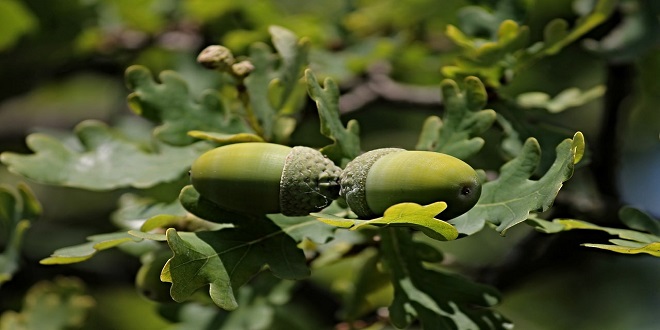Here’s everything you need to know about planting fire-resistant trees

The United States has been plagued by forest fires. According to the National Interagency Fire Center, more than 50,000 wildfires were reported across the United States in 2021. This is an increase from the 48,000 fires that were reported in the previous year. Although each fire has a different cause, many can be attributed back to human activity. It is important to take steps to prevent forest fires happening in the first instance. Planting fire-resistant trees is one way to achieve this. As their names suggest, fire-resistant trees are trees that are resistant against fire. They are less likely to catch on fire and spread the flames. There are many kinds of fire-resistant trees. Each has its own advantages and disadvantages. These are some of the most well-known fire-resistant trees:
Eucalyptus Trees : Eucalyptus Trees are native to Australia. They are well-known for their high oil content. They are highly flammable, but they also have a high ability to stop the spread of fires.
-Pine Trees Another type of tree is fire resistant. Pine needles are rich in resin which protects the tree from being set on fire.
–Sequoia TreesSequoia Trees are the oldest and largest trees in the world. Because of their thick bark, they are fire resistant.
– American Mountain Ash Tree The American mountain Ash tree is a tree that is native to the eastern United States. Because of their thick bark, these trees are well-known for being fire resistant.
Hemlock Trees are another tree type that is fire-resistant. This tree has a thick bark layer that helps protect it from being caught on fire.
Chinese Pistache Tree A type of tree that is native to China, the Chinese pistache tree can be described as Because of their thick bark, these trees are well-known for being fire resistant.
It is important to take into account the climate where you live when choosing a fire-resistant plant. Certain trees are more resilient to fire than others in different climates. You should also consider the tree’s size and the amount of space available for planting. You may choose to plant a larger tree if you live near forest fires. This will help prevent the spread of flames. If you don’t have much space, you might choose a smaller tree.
What makes these trees fire-resistant
High moisture content is one of the main characteristics of fire-resistant trees. High moisture trees are less likely to catch on fire and spread flames. Water acts as a natural fire suppressant. High oil content is another common feature of fire-resistant trees. The high oil content of eucalyptus trees is a common characteristic. The tree is more flammable due to the oil, but it also stops fires from spreading. The oil acts as a barrier between the flames of the fire and the wood of your tree, preventing it from spreading. Finally, fire-resistant trees may have thick bark. This bark provides additional protection from the flames and wood.
There are some drawbacks to planting fire-resistant trees. The biggest drawback is the high cost of fire-resistant trees. They often need to be ordered from a nursery. Many people may not be able to afford them, making them difficult to plant on their own property. Fire-resistant trees can also be very invasive. They can also crowd out other trees and plants, which can have a negative impact on the environment. To ensure your landscape is not negatively affected by any tree you plant, it’s important that you do your research.
There are some things you should remember
- It is up to you to determine which tree is the best for your soil and climate. Some trees are not fire-resistant in all places.
- It is important to ensure that you have enough space to plant them. You need enough space to allow fire-resistant trees to grow large so make sure you have enough.
- It is important to think about the long-term care of your trees.
To keep fire-resistant trees healthy and safe, they must be regularly trimmed and pruned. Fire-resistant trees are a wonderful addition to any property. These trees can prevent forest fires spreading to your property and causing damage. Before you plant them, however, there are a few things to remember. Before making any major decisions, do your research.
When encountering issues with Vidmate old version, seeking help from online forums and user groups can be beneficial. These platforms provide a space for users to share experiences and troubleshoot common problems. Engaging with the community can offer valuable insights and solutions that may not be readily available elsewhere. Additionally, participating in discussions allows users to connect with others who may have encountered similar issues, fostering a supportive environment for problem-solving. By actively engaging in these communities, users can gain access to a wealth of knowledge and support, ultimately enhancing their experience with Vidmate old version.





